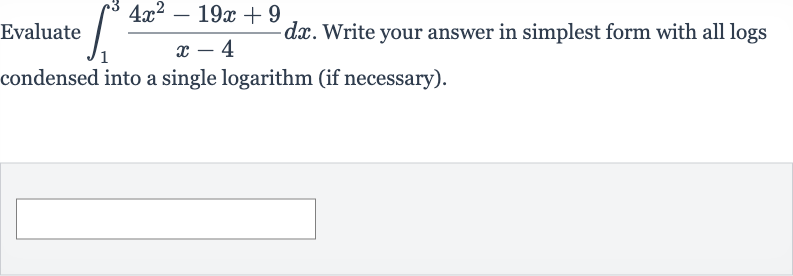Full solution
Q. Evaluate . Write your answer in simplest form with all logs condensed into a single logarithm (if necessary).
- Perform Polynomial Long Division: First, we will perform polynomial long division to simplify the integrand . Dividing by gives us . Multiplying by gives us . Subtracting this from the original numerator, we get . Dividing by gives us . Multiplying by gives us . Subtracting this from the previous remainder, we get . Since is of lower degree than the divisor , we stop here. The result of the division is with a remainder of . So, the integrand can be rewritten as .
- Split Integral into Two Parts: Now, we can split the integral into two parts: and . The first integral is straightforward to evaluate: . Evaluating from to gives us .
- Evaluate First Integral: The second integral from to is more complex. We can rewrite the numerator to match the derivative of the denominator:Let's rewrite as , so the integral becomes .This can be split into two integrals: .The first part simplifies to , which is just .The second part is , which is .
- Rewrite Numerator for Second Integral: Now we can evaluate the second integral from to : from to is simply evaluated from to , which gives us . from to is evaluated from to , which gives us . Since is , this simplifies to .
- Evaluate Second Integral: Combining the results from the two parts of the integral, we have:The integral from to of dx is equal to (from the first part) plus (from the second part, the term) minus (from the second part, the logarithmic term).So, the final answer is .

